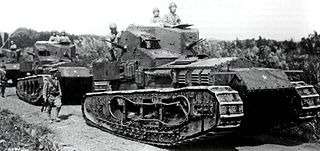The Butterfly Effect : the man whose death changed the history of the whole world

This time we will discuss a name that lived in the 19th century named Charles Lennox Richardson. Never heard of that name? Well, you have to know him because the death of a British merchant in Japan on September 14, 1862 would have an unimaginable domino effect. What happened to him is an example of the butterfly effect where a small, seemingly insignificant event will have a chain effect that can have an enormous final impact, even affecting the fate of the entire world.
Charles Lennox Richardson was born in 1834 in London. In 1853, he moved to Shanghai, China to try his luck there. He became a successful trader until finally after accumulating an abundant coffers of wealth, he decided to retire and return to England. On his way, he decided to stop by Yokohama, Japan, to meet an old friend named Woodthorpe Charles Clarke. Together with their friend, William Marshal and his sister-in-law, Margaret Watson Borradaile, they both decide to travel to the Kanagawa region to have a look at the Kawasaki Daishi shrine. And that's where the disaster will begin.
But instead of saluting, Charles was determined to continue riding his horse through the royal motorcade. Charles himself was stubborn, arrogant, even a little racist. He thought that the natives should respect Western immigrants. Margaret tried to warn Charles, but she should have answered arrogantly: Don't worry, I know how to deal with these people.
The results were inevitable. The samurai who was guarding the prince immediately slashed Charles. As if that wasn't enough, they then stabbed him with the swords and spears they were carrying. In total, his body suffered 10 stab wounds and finally died. Two of Charles's friends were also attacked at the time, but the samurai code of ethics forbade them to injure a woman named Margaret.
Charles's body was later buried in Yokohama, but the incident sparked the anger of European expats living in Japan. They are protesting against their country's consulate to demand justice. The British then demanded $ 25,000 in compensation from the House of Satsuma and execution for the samurai who killed Charles. However, of course Prince Shimazu refused.
The tensions between Britain and Japan at that time finally triggered the Anglo-Satsuma War in which on August 15-17, 1863, the British navy bombarded the city of Kagoshima, the center of daimyo power. The seven warships led by Sir Augustus Kuper as British commander at that time automatically won and defeated Japan. However, it turned out that, like a plot twist, it actually triggered Japan to forge a friendship with England, instead of being hostile to them.
Since that incident, Japan saw the superiority of the British navy and the superiority of technology and weaponry possessed by Western countries. They realized that if they wanted to win wars in the future, they had to learn and take advantage of this technology. The Japanese also sent one of the officers in the Anglo-Satsuma War, a young man named Togolese Heihachiro to study in the British navy in London. Upon his return, he became known as the Father of the Japanese Navy. One of his greatest achievements as an admiral was presiding over a Japanese naval victory over Russia in the Battle of Tsushima in 1905. There, the Russian navy could not stand up to a Japanese naval force which had been reformed and modernized thanks to the lessons they learned in it. previous battle.
This is the first time that an Asian nation has won a battle against a Western nation since Genghis Khan's era seven hundred years ago. This victory brought the Japanese nation to the pinnacle of self-confidence. The sense of nationalism sparked by this victory eventually led them to become one of the main actors in one of the bloodiest events in world history since its creation.
Isoroku Yamamoto, one of the sailors who fought at the Battle of Tsushima, was later recorded leading the attack on Pearl Harbor on December 7, 1941 and officially starting World War II. The battlefield ultimately killed 85 million people and ended with the atomic bomb attacks on Hiroshima and Nagasaki in 1945.
Charles is indeed not a blue-blooded prince with the throne of a superpower like Franz Ferdinand. But always remember that name, Charles Lennox Richardson, the man whose death changed the history of the whole world.
Good,I am subscribe Please subscribe and view me